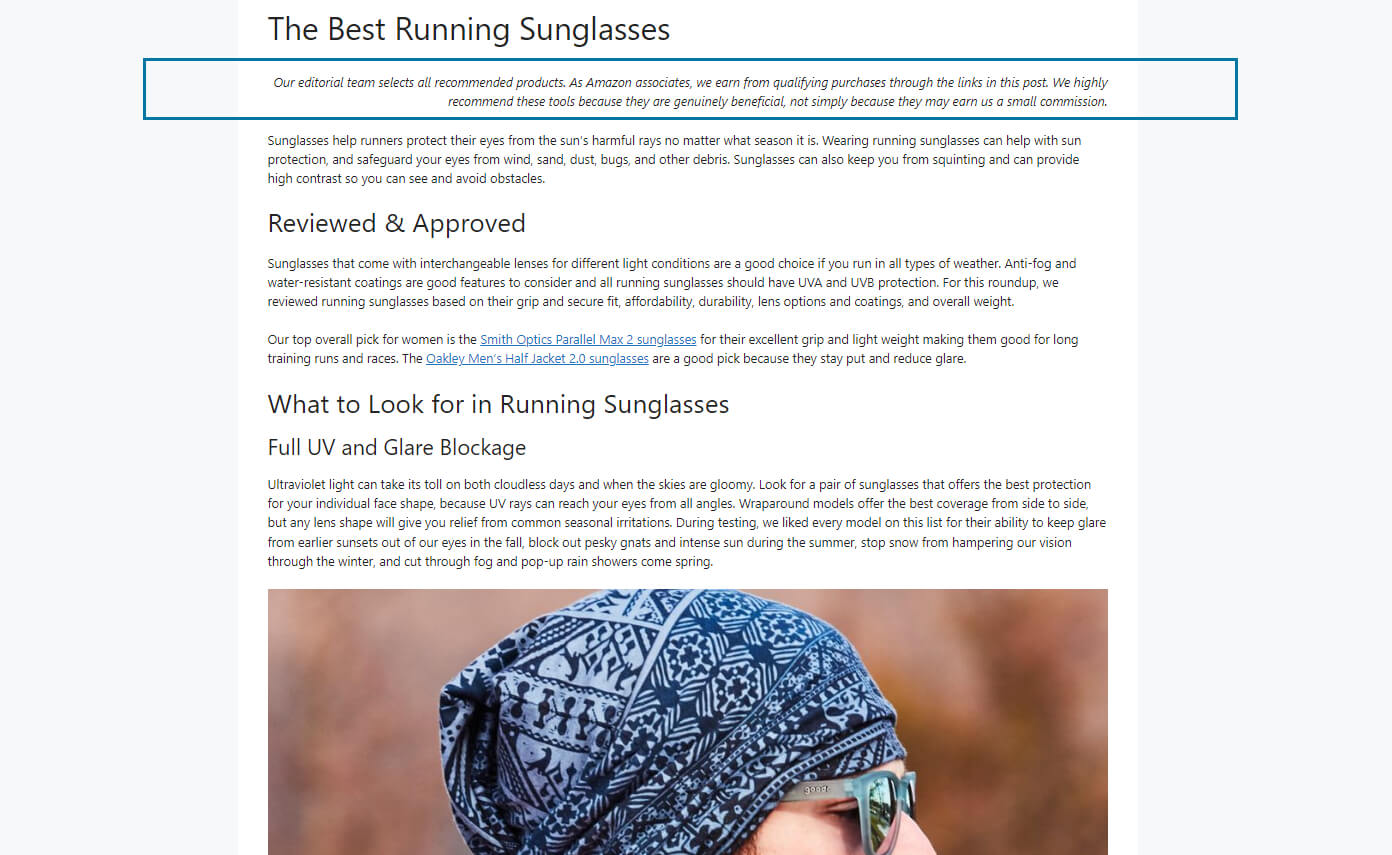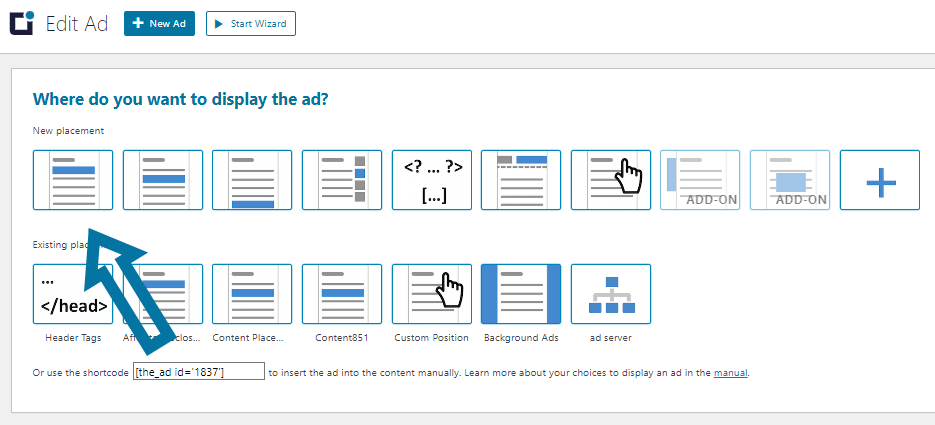Affiliate marketing is a popular way for website and blog owners to earn money by promoting products or services they love. However, being transparent with your audience and telling them about your financial relationship with the companies you promote is crucial.
This is where an affiliate disclosure comes in. An affiliate disclosure is a statement that informs your readers that you have an affiliate relationship with certain brands, products, and services and that you may receive a commission if someone makes purchases through your affiliate link.
This article will discuss the importance of having an affiliate disclosure on your website or blog and provide tips on writing a clear and compelling affiliate disclaimer. From the legal requirements to the ethical considerations, I will explore everything you need to know about this important aspect of affiliate marketing.
Table of Contents
Whether you’re a seasoned affiliate marketer or just starting, this guide will help you create a disclosure that protects you and informs your audience.
What is an affiliate disclosure?
According to the FTC endorsement guide, you need an affiliate disclosure if you’re financially or otherwise compensated by companies to mention or review their products on your site.
An affiliate disclosure is a website statement informing users about an affiliate relationship between the publisher and companies whose products or services are being promoted, reviewed, or recommended. It alerts users to affiliate links, which are URLs that link to another business’s products or services, and earns the publisher a commission when users make purchases through the links.
The legal situation regarding the necessity of marking affiliate links depends on your country. Please inform yourself about the regulations that apply to you. In the USA, for example, the rules are relatively strict. There, the Federal Trade Commission (FTC) has required affiliate disclosures since 2009 to ensure transparency and informed decisions by users. Some affiliate programs may also require them.
A well-written and user-friendly affiliate disclosure should clearly describe the nature of the publisher’s relationship with the company, including any compensation received. Failure to have an appropriate affiliate disclosure can result in fines or banned affiliate accounts.
How to write an affiliate disclosure
It’s essential to read the terms for your ad networks carefully. Not displaying the correct affiliate disclosure for specific affiliate marketplaces could get you banned and lose any commissions you have earned.
An affiliate disclosure should be clear and conspicuous, written in user-friendly language, and include the following information:
- Description of the affiliate relationship: Clearly state that you have an affiliate relationship with the company whose products or services you are promoting, reviewing, or recommending.
- Explanation of affiliate links: Explain what they are and how they work.
- Disclosure of compensation: Indicate that you will receive compensation if users purchase through your affiliate links.
- Compliance with FTC guidelines: Mention that you follow the FTC endorsement guidelines.
Tips for clear affiliate disclosure
As for where to place a disclosure, the guiding principle is that it has to be clear and conspicuous. The closer it is to your recommendation, the better. It is important to note that some affiliate programs may have specific disclosure requirements, so read each program’s terms and include any necessary information.
These tips will help you create a disclosure that builds trust with your audience and increases the success of your affiliate marketing efforts.
- Make it easy to understand by writing simply and avoiding complex language.
- Ensure visibility by placing the disclosure before affiliate links on every page and highlighting it with a different font, color, or text size.
- Keep it short; a sentence or short paragraph is enough. If a more extended version is necessary, link from your short disclosure to a separate affiliate disclaimer page.
- Follow affiliate marketplace rules, such as specific language required by Amazon Associates.
- Emphasize that using affiliate links does not increase the cost for the reader.
If you’re unsure what to put in your affiliate disclosure, try this generator from termly, which integrates the Amazon referral program and other ad networks like AWIN or eBay.
Avoid bad affiliate disclosure practices
It’s essential to ensure that your affiliate disclosure is clear and visible to avoid potential legal issues. This bullet list highlights some inadequate affiliate disclosure practices to avoid in order to maintain transparency and integrity with your audience.
- Don’t hide disclosure text in the privacy policy or terms of service pages.
- Avoid difficult-to-find placements for the disclosure page.
- Don’t solely mention affiliate links on the About Us page.
- Don’t limit the disclaimer to only the footer.
- Don’t try to conceal, diminish or confuse the affiliate disclosure statement.
Affiliate disclosure examples
Here are a few examples of affiliate disclosures that you can find in a similar form on many affiliate websites. They should guide you, and you can adapt them to your needs.
Our editorial team selects all products recommended by [your website]. Some of our stories include affiliate links. We may earn an affiliate commission if you buy something through one of these links.
Consider this following approach if you want to highlight your team’s moral integrity.
Our affiliation with several of these tools brings us great pride. By following our links to these tools and purchasing, we can earn a commission without incurring additional costs. Our recommendations result from our thorough understanding of these companies and their products, which we have acquired through extensive experience. We highly recommend these tools because they are genuinely beneficial, not simply because they may earn us a small commission.
Try this variant if you act as the sole author and want to appeal to the reader’s willingness to support a small business.
As an affiliate for [company name], I can earn a commission should you choose to purchase through the links in this post. It is essential to mention that I only endorse products I believe in and personally use. Your support for my business through these purchases allows me to maintain a sustainable platform for creating valuable and relevant content for you.
Amazon
Amazon Associates requires their affiliates to disclose the partnership on their websites. As such, it’s vital to add a disclaimer. To make it even easier for associates, Amazon approves this simple statement as a disclaimer:
As an Amazon Associate, I earn from qualifying purchases.
What could happen if you omit the affiliate disclosure?
Please check the legal situation in your country to ensure that you are promoting your affiliate products in a legally compliant manner. As mentioned above, the rules vary widely, and in the US, for example, the FTC can theoretically order law enforcement to seize any ill-gotten gains.
At Amazon, not displaying an affiliate disclosure can be the reason for being expelled from the Amazon affiliate program and losing your unpaid commissions because your advertising is not truthful and, therefore, illegal.
Initially, this sounds a bit draconian, and I don’t want to cause panic. I do not know of any case where an Amazon affiliate has been banned or prosecuted by criminal authorities because of problems with the affiliate disclaimer.
How to Add an affiliate disclosure at the top of your WordPress posts
Suppose you don’t want to place a message next to every link you have. In that case, one of the easiest ways is to automatically insert an affiliate disclosure at the top of your blog posts with affiliate links.
Here’s how to do it step by step.
Although this sounds complex and intimidating, it’s straightforward. It requires no expert knowledge, is free, and doesn’t take long to implement. In this video, you can see how quickly you can put this on.
Install Advanced Ads
First, you need to install and activate Advanced Ads on your website. In this video, you can see how quick and easy it is.
Create your disclosure
Next, create a new ad that contains your affiliate disclaimer. You can use the Plain text and code or the Rich content ad type.
Once you have created the notice, save and publish this ad.
Choose a placement to embed your disclosure
After publishing the ad, Advanced Ads will ask you where you want to place it. You can choose one of the existing placements or create a new one. Since we want to include the affiliate disclaimer above the articles in this example, select the Before Content placement here.
Many affiliate sites include the notice right at the end of the article. Select the After Content placement instead if you want to position it there.
Use conditions to target this disclosure to specific posts and pages
In the last step, you should ensure that the affiliate disclosure appears only above posts and pages that contain affiliate links. This way, you avoid the notice appearing above every post on your website.
The best way to do this is to add one of the numerous Display conditions. You can use them to limit the injection to posts of specific categories or tags, for example. On my example page, I indicate in the body text that the integrated product links lead to Amazon. So I use the Post Content condition of Advanced Ads Pro instead. This way, this ad only appears above posts whose content contains the term “Amazon”.

Conclusion
A clear and conspicuous affiliate disclosure is crucial for website and blog owners participating in affiliate marketing. It helps you comply with legal requirements and builds trust with your audience by being transparent about your financial relationship with the companies you promote.
Following the tips and examples in this tutorial, you can create a disclosure that protects you and informs your audience, ultimately leading to more successful affiliate marketing efforts.
So, take the time to review your current disclosure. Or create a new one, and ensure that it meets the guidelines discussed in this article. Your audience will appreciate your transparency, and you can continue to earn income through affiliate marketing with confidence.





